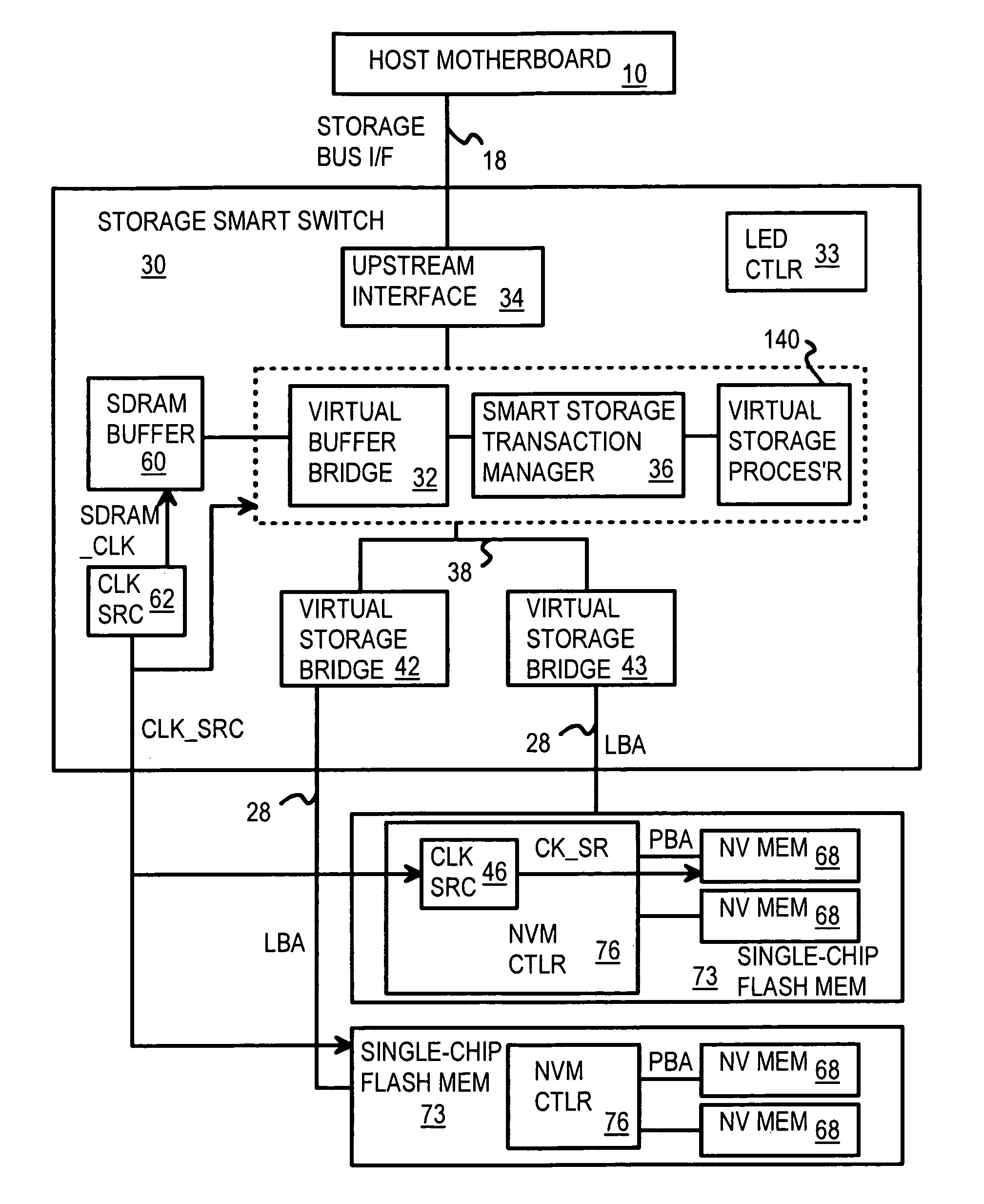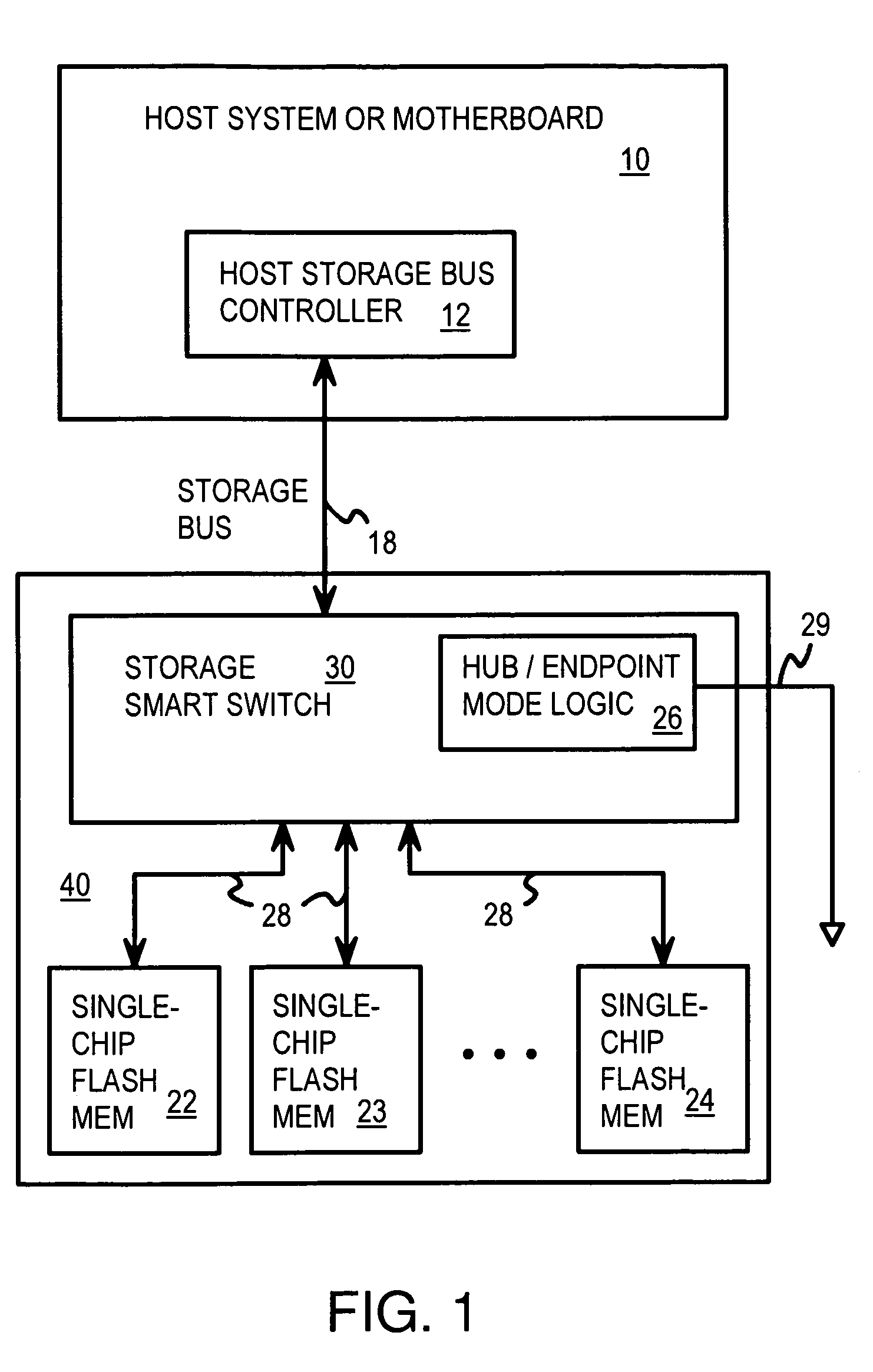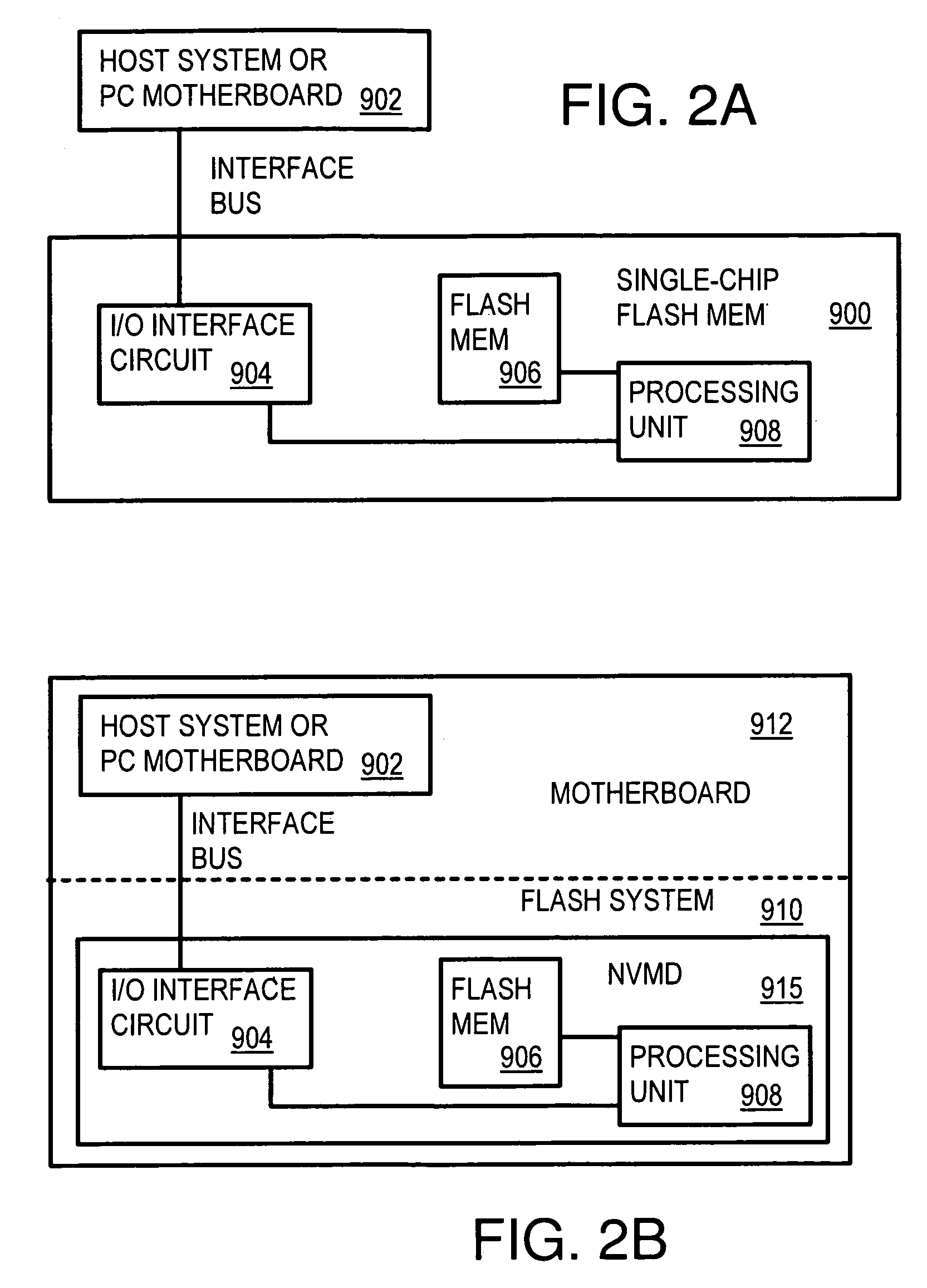Multi-level controller with smart storage transfer manager for interleaving multiple single-chip flash memory devices
a multi-level controller and flash memory technology, applied in digital storage, instruments, computing, etc., can solve the problems of flash wearout, unreliable flash, and limitations of nand flash
- Summary
- Abstract
- Description
- Claims
- Application Information
AI Technical Summary
Benefits of technology
Problems solved by technology
Method used
Image
Examples
Embodiment Construction
[0041]The present invention relates to an improvement in solid-state flash drives. The following description is presented to enable one of ordinary skill in the art to make and use the invention as provided in the context of a particular application and its requirements. Various modifications to the preferred embodiment will be apparent to those with skill in the art, and the general principles defined herein may be applied to other embodiments. Therefore, the present invention is not intended to be limited to the particular embodiments shown and described, but is to be accorded the widest scope consistent with the principles and novel features herein disclosed.
[0042]FIG. 1 is a block diagram of a switch that aggregates and virtualizes multiple flash-memory endpoints. Host controller 12 for host 10 sends transactions over storage bus 18 to multi-flash device 40. Smart storage switch 30 on multi-flash device 40 receives and responds to transaction from host 10 over storage bus 18.
[00...
PUM
 Login to View More
Login to View More Abstract
Description
Claims
Application Information
 Login to View More
Login to View More - R&D
- Intellectual Property
- Life Sciences
- Materials
- Tech Scout
- Unparalleled Data Quality
- Higher Quality Content
- 60% Fewer Hallucinations
Browse by: Latest US Patents, China's latest patents, Technical Efficacy Thesaurus, Application Domain, Technology Topic, Popular Technical Reports.
© 2025 PatSnap. All rights reserved.Legal|Privacy policy|Modern Slavery Act Transparency Statement|Sitemap|About US| Contact US: help@patsnap.com



